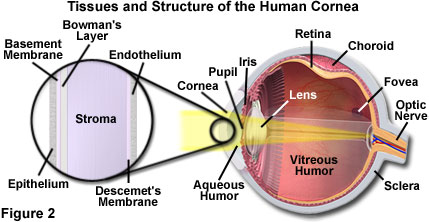
**The Captivating Realm of Chromostereopsis and Its Various Effects on Perception**
Have you ever gazed at an image and felt as though the colors were springing forth with a nearly three-dimensional quality? For those who experience the phenomenon known as chromostereopsis, this feeling is a vivid truth. While some simply perceive a static blue iris against a red eye, others experience a profound depth illusion, in which colors seem to occupy different distances. The extent to which this effect is felt varies widely among individuals, making it an intriguing topic for investigation.
**Grasping Chromostereopsis**
Chromostereopsis is a visual phenomenon characterized by reds and blues appearing to occupy differing depths or locations when viewed simultaneously. This effect is believed to stem from how different light wavelengths are focused by the eyes. As red and blue light refracts in distinct ways, they generate a perceived variance in depth, a sensation that contrasts with conventional stereo-depth illusions that typically rely on two separate images—one for each eye.
**Variability in Perception**
A prominent feature of chromostereopsis is the diversity in individual perception. While many individuals perceive red as closer and blue as more distant, a minority experience the reverse. These differences highlight the intricacies of visual perception and how personal variations can greatly influence the interpretation of optical illusions.
**Amplifying the Chromostereopsis Effect**
For those who exhibit pronounced chromostereopsis, modifications in viewing conditions can enhance the effect. Observers may discover that blinking rapidly or viewing the image in a dimly lit environment with heightened screen brightness boosts the illusion. Curiously, the effect may disappear if one eye is shut, underscoring its dependence on binocular vision.
**Artistic and Functional Uses**
The phenomenon has also been incorporated into art and media, from stained glass designs to the sets of television programs like “Have I Got News For You.” Artists and designers may intuitively harness chromostereopsis to forge engaging visual experiences that captivate audiences with an illusory 3D effect.
**Scientific Investigation and Elucidation**
Although it has been identified, the precise mechanics of chromostereopsis are still only partially understood, with specialists characterizing its explanation as complex and layered. Factors such as light wavelength, optical properties of lenses, and image brightness all play a role in the experience. This ongoing enigma serves as a rich avenue for continued research and inquiry.
As researchers and enthusiasts strive to disentangle the complexities of chromostereopsis, its influence across disciplines from neuroscience to the arts underscores the intricate relationship between visual phenomena and human perception. Whether for scientific comprehension or artistic creation, the examination of chromostereopsis serves as a testament to the remarkable abilities and mysteries of human vision.